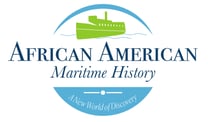African American Maritime History Series #1: Seed Trade, Horticulture and Botanical Gardens

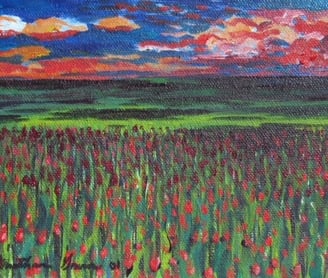
The early colonial transatlantic seed trade began when the first colonists landed on North American soil. The trade grew and flourished during the seventeenth and eighteenth centuries. Landowners used the seed trade as a livelihood and for horticultural scientific study. However, the seed trade was multipurposed. It became a tool of colonial expansion as well as a lifeline for enslaved peoples to hold onto their own culture and botanical practices. The results of the early American seed trade can be seen today with the existence of botanical gardens, historic greenhouses, and European and African plants that have gradually naturalized into the North American environment.
Enslaved people were instrumental in the importation of seeds to North America. When hundreds of thousands of Africans were abducted and brought forcibly across the Atlantic to labor on plantations and other venues, some intuitively brought seeds with them so that they would have a part of their culture and foods with them. The enslaved also repurposed plants that had been imported by Europeans for their exclusive use. Two of these plants, cotton root and the peacock flower, were used by enslaved women across the Atlantic world to prevent unwanted pregnancies and as an abortifacient for unwanted pregnancies for themselves and their White mistresses. Additionally, the majority of laborers who planted and harvested the colonists’ imported plants were enslaved. Many glimpses of this history can be seen in planation records where owners wrote about the planting and harvesting of crops. While the owners never performed this labor, noting the days when crops were harvested indirectly refers to the work that had been done by the enslaved people. The absence of direct attribution to the enslaved laborers illustrates the silencing of the contributions of the enslaved in colonial documentation. Magnificent gardens were built by the enslaved using rare and unusual plants and flowers in and around Southern port maritime cites like the examples below.

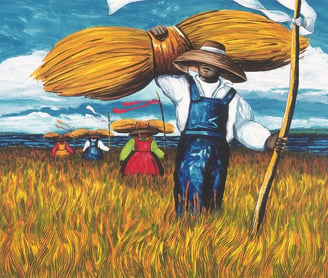
Magnolia Plantation: A rice plantation and landscaped garden created by African enslaved people from rice growing regions.
Magnolia Plantation and Gardens (464 acres) is a historic house with gardens located on the Ashley River at 3550 Ashley River Road west of Ashley, Charleston County, South Carolina. It is one of the oldest plantations in the South, the oldest public garden in America, and listed on the National Register of Historic Places. Magnolia Plantation is located near Charleston and directly across the Ashley River from North Charleston. The house and gardens are open daily.
The plantation dates to 1676, when Thomas and Ann Drayton (née Anna Fox) built a house and small formal garden on the site. (The plantation remains under the control of the Drayton family after 15 generations. Some of the enslaved people who were forced to work at the house, on the land and on the water were brought by the Draytons from Barbados in the 1670s. The historic Drayton Hall was built in 1738 by enslaved laborers for John Drayton, grandfather of judge John Drayton II, on an adjoining property.
Magnolia was originally a rice plantation, with extensive earthworks of dams and dikes built in fields along the river for irrigating land for rice cultivation. African enslaved people from rice-growing regions created the works. As time went on, these enslaved people developed a creolized Gullah language and vibrant culture, strongly influenced by their West African cultures. They have retained many combined cultural elements from West Africa to this day in what is known as the Gullah Heritage Corridor of the Lowcountry and Sea Islands of the Carolinas and Georgia.
John Grimke-Drayton, an Episcopal minister, began to have the gardens reworked in an English style; according to legend, this was done to lure his bride south from her native Philadelphia. He was among the first to use Camellia japonica in an outdoor setting (1820s) and is said to have introduced the first azaleas to America. Under his supervision with labor provided by enslaved persons, the gardens of Magnolia on the Ashley became well known in the antebellum period for their azaleas and live oak trees. They were photographed by Mathew Brady, who would later become famous for his photographs of the American Civil War. Another visitor to Magnolia in this period was John James Audubon, for whom Magnolia's Audubon Swamp Garden is named.
Enslaved Africans and African Americans worked in large gangs and lived in large groups on such plantations as Magnolia and others in the Low Country and the Sea Islands, often with little interference by Whites. They developed a Creole language, now known as Gullah, that was based on West African languages and incorporated some English, as well as a culture that drew from these various cultures. This is considered a unique culture among the various African American groups, distinguished by certain cuisine, which features rice and seafood, and crafts such as baskets made of sea grass.
Of the five cabins which remain on site, four were built in slavery times and one about 1900. In the Reconstruction period and later, freedmen lived in the former slave cabins. In order to represent the range of enslaved and free black workers' lives, these cabins have been restored to differing periods: one for 1850 and others to decades after the Civil War and into the twentieth century. The interpretive program reflects African American history at the plantation, From Slavery to Freedom. Archeological work is revealing more about the lives of both slaves and free black workers, who were skilled gardeners and craftsmen.

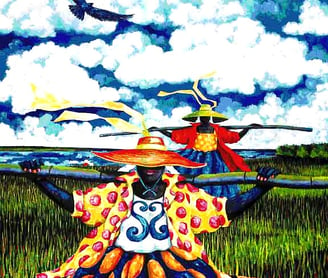
Middleton Place: A story of exemplary gardening work performed by the enslaved on a maritime rice plantation in the Lowcountry
"John Williams, an early South Carolina planter, probably began building Middleton Place in the late 1730s." (“Entrance to Middleton Place, Near Charleston, South Caroli… | Flickr”) His son-in-law Henry Middleton (1717–1784), who later served as President of the First Continental Congress, completed the house's main section and its north and south flankers, and began work on the elaborate gardens. Middleton's son, Arthur Middleton (1742–1787), a signer of Declaration of Independence, was born at Middleton Place, and lived at the plantation in the last years of his life.Middleton Place is set on the southwest bank of the Ashley River, directly across the river from the City of North Charleston. At this point, the southward-flowing river bends sharply to the east enroute to its mouth at Charleston Harbor about 15 miles downstream. Middleton Place is a National Historic Landmark, home to the oldest landscaped gardens in America and an enduring, vibrant, and essential part of the Charleston and American experience. The Garden Club of America described Middleton Place in 1940 as the “most important and interesting garden in America.” (“Middleton Place Garden Tours, Butterfly Lakes, Formal And Landscaped ...”) It remains so to this day.
Middleton began work on the plantation's gardens in 1741. Determined to outshine his neighbors, who were laying out neat four-squared patterned parterres, Middleton employed an English gardener named Simms, of whom little is known. Basing his designs less upon his own trip to England, Middleton and Simms derived their inspiration from the engraved plans in the translation of the popular garden book by Dezallier d'Argenville, The Theory and Practice of Gardening. Middleton and Simms extended a main axis centered on the main block of the house, expressed as a gravel carriageway leading through a greensward to the first of six shaped turf terraces with bowed centers. At the level of the river a pair of lakes (the "Butterfly Lakes") were excavated on either side of a turf causeway prolonging the axis. With the river beyond, the lakes were flanked by more water, a stream dammed to the right to form the long narrow Rice Mill Pond, and a levee extended to the left to enclose floodable rice fields.
Arthur's son Henry Middleton's friendship with French botanist André Michaux resulted in the first camellias grown in an American garden, a house gift during Michaux's visit in 1786. Three of the four planted at the corners of the main parterre survive, grown to fifteen feet: One is Camellia japonica "reine des fleurs"; the other is an ancestor of the modern cultivar Charles Sprague Sargent.[10] The second Henry Middleton expanded and enriched the gardens, introducing the garden's first Asiatic azalea (Rhododendron indica), and the crape myrtle ( Lagerstroemia indica), one of the oldest in America. He also filled greenhouses with exotics and imported plants and seeds to give antebellum Middleton Place something of the air of a botanical garden. Henry continued acquiring land, eventually becoming one of South Carolina's wealthiest planters. At one point, he owned 20 plantations consisting of 50,000 acres and 800 enslaved persons.

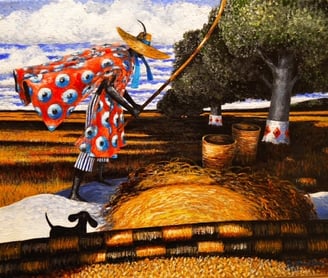
Upon Henry Middleton's death in 1846, Middleton Place passed to his son, Williams Middleton. In 1860, Williams Middleton signed the South Carolina Ordinance of Secession, in which the state declared it was no longer part of the United States. South Carolina's actions led to the attack on Fort Sumter in April 1861, sparking the U.S. Civil War. In 1783, the surrender terms eliminating British troops from the Southern colonies was signed at Middleton. In recent years, the Middleton Place Foundation has carried out extensive research to document the thousands of African American slaves once owned by the Middleton family.
Places like Philadelphia, Boston, Charleston, and other port-towns along the Atlantic seaboard imported many seeds from all over the world enabled by maritime transportation and primarily enslaved African workers. The landowners built elaborate gardens from these seeds to demonstrate their wealth. These private exotic gardens ultimately become predecessors to botanical gardens. By the start of the 1800s, the seed trade was in full bloom.
Eventually, flowers were grown and harvested by the enslaved on agricultural plantations and brought to urban centers of Atlantic port cities by enslaved boat men which magnifies another area of the economic impact of the maritime history of African Americans in colonial North America. In the early 20th century, African American flower ladies were instrumental in the revitalization of the City of Charleston when they brought flowers by boat onto the peninsula to sell to tourists. Art prints of the African American flower ladies were also sold by the hundreds to Northern tourists which helped Charleston evolve into the historic and heritage tourism mecca of today.
Kim Cliett Long, Ed.D., FRSM, FRSPH - Artwork by Jonathan Green (TM)
Further reading and exploration of the topic:
Colonial Agriculture – History and Science of Cultivated Plants (oregonstate.education)Locating the Transatlantic Seed Trade in James Madison’s Garden (amphilsoc.org)Labor and Trade in Colonial AmericaAfrican Slaves' Contribution in Building America (google.com)Timeline of American Garden History - Smithsonian Gardens (si.edu)How Plants Were Used to Gain Freedom On The Underground Railroad - The Allegheny FrontAgricultural – Ashley River Historic CorridorMichaux, Andre and Francois-Andre Michaux | South Carolina Encyclopedia (scencyclopedia.org)
References
Bull, Elias B.; Bernard Kearse. "Magnolia Plantation and Gardens" (PDF). National Register of Historic Places - Nomination and Inventory. Retrieved 10 June 2022.Barbara Doyle, Mary Edna Sullivan, Tracey Todd, Beyond the Fields: Slavery at Middleton Place, 2008Barbara Doyle, Delighted with the Mill Archived 2021-01-05 at the Wayback Machine. The Rice Paper – "Garden of Dreams". Magnolia Plantation & Gardens website. Accessed June 10, 2022."Magnolia Plantation and Gardens, Charleston County (S.C. Hwy. 61, Charleston vicinity)". National Register Properties in South Carolina. South Carolina Department of Archives and History. Retrieved 10 June 2022.Middleton Place Foundation, Middleton Family History Archived 2011-01-10 at the Wayback Machine. Retrieved: 4 June 2022.Samuel Stoney, Plantations of the Carolina Low Country (Charleston, S.C.: Carolina Art Association, 1939), pp. 57, 64-65, 177.Middleton Place Foundation, African American History Archived 2006-10-05 at the Wayback Machine. Retrieved: 5 June 2022.Ogden Tanner, "Middleton Place: Charleston's Continental Classic", Horticulture 62.2 (February 1984:28-33), p. 29.Newsletter of the Carolina Gold Rice Foundation, April 2005. Retrieved: 5 June 2022.Dorchester County Comprehensive Plan [permanent dead link], November 2008, p. A-15. Retrieved: 5 June 2022.Naomi Schaefer Riley, Equal Before God: Why Did Masters Want Their Slaves to be Christians? 2 June 2006. Retrieved: 5 June 2022.


